-Hiking to Burton Hut at Sphinx Bay in Garibaldi Park-
It started, as they always do, with noble intentions: preparation, discipline, training. But as we sat down to a greasy breakfast in Squamish at 7am – sick, hungover – we understood that intentions may not be enough to get us through this one. This weekend’s plan? A three-day traverse of the Garibaldi Névé. The trek would start at the Rubble Creek trailhead up to Garibaldi Lake. Once there, we would cross the lake and spend the night at Burton Hut. Day 2 would take us down to the south edge of the lake, up the col by the Sharkfin, and across the series of glaciers surrounding the northeast sides of the Garibaldi massif, and into the region known as ‘the Névé’. The night would see our weary feet reaching the hut at Elfin Lakes, a classic Squamish hike/ski-tour, and day 3 would take us down the Elfin trail to the parking lot where one of our two cars had been stashed. At 40+km of hard winter trekking through serious mountains, complete with avalanche danger, glacier travel, and a crevasse field to negotiate, the plan was ambitious. Epic. Glorious. But a series of events, including an unseasonably warm and sudden weather system, conspired against us.
We parked a car at the Rubble Creek trailhead (turn right at the signs for Garibaldi Park and Black Tusk off highway 99 towards Whistler. If you hit Daisy Lake and the dam, you’ve gone too far!). As the snow was still thick and heavy, we had to park just off the highway, shoulder the packs, and walk the 2km road up to the summer parking lot and trailhead. The trail to Garibaldi Lake is mostly a long series of switchbacks through the forest. The scenery is unfortunately pretty static for this portion – it doesn’t get more interesting until you hit the junction (marked by a large signpost with a map) for Taylor Meadows (left) and Garibaldi Lake (right). We took the right path, and were relieved as the steady uphill gave way to a more rolling traverse.
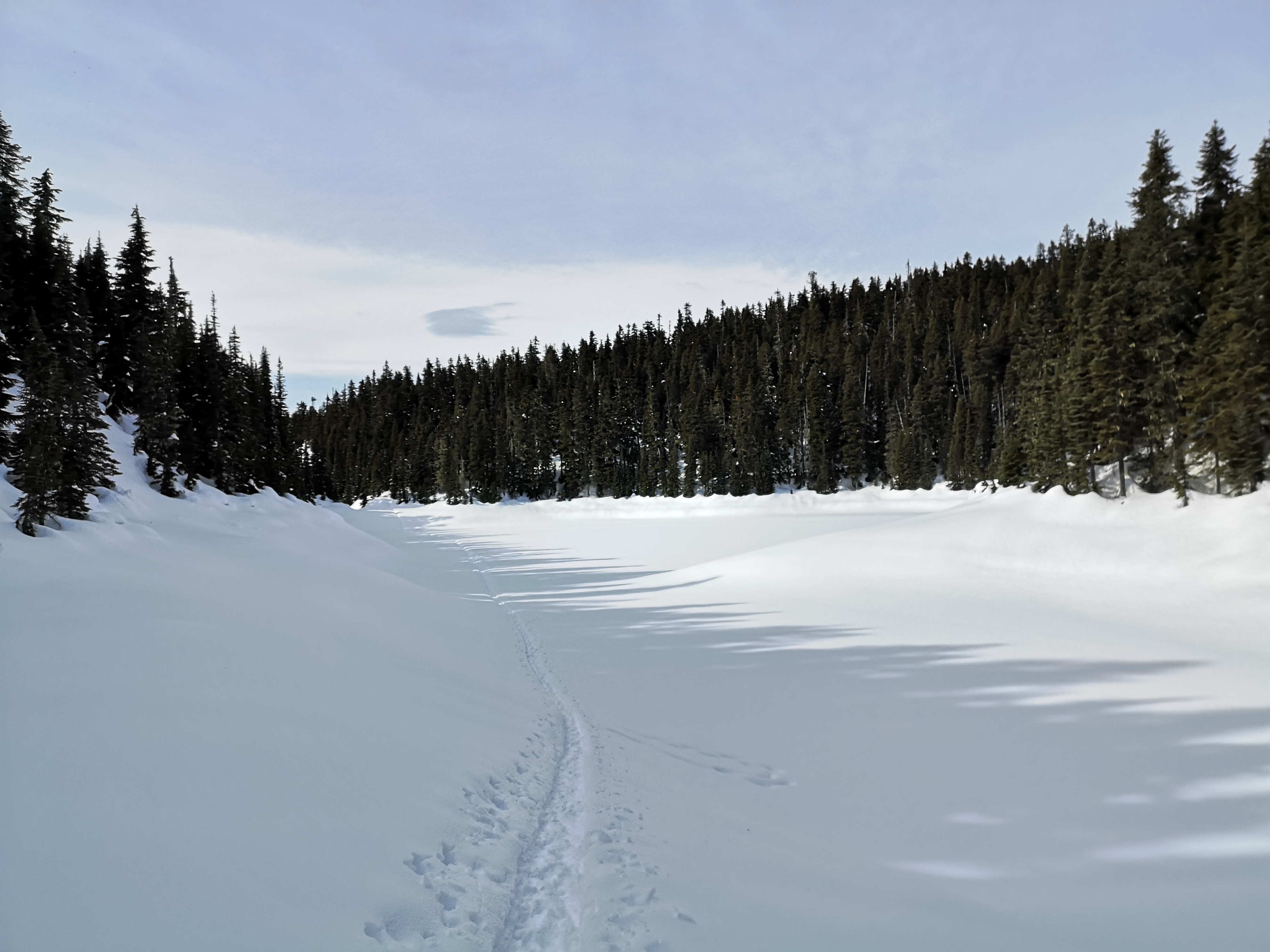
We had avoided using the snowshoes until after the junction, keeping in mind that one pound on your feet is the same as five pounds on your back. The trail was quite packed, and although very slippery in some spots due to the rapidly increasing temperature of the day, we had managed well enough. But soon we encountered the frozen expanse of Barrier Lake, and couldn’t resist tramping through the fresh (and mercifully flat) powder on its surface. As it was now sometime after noon, and the spring sun was beating down on us in full force, we had quite the adventure dodging ‘tree bombs’: alarmingly large clumps of snow that smashed onto the ground all around us. Luckily there were no direct hits!
We reached the edge of Garibaldi lake around mid-afternoon, and decided to take a break at the shelter by the summer campground. The shelter is a fairly large structure, complete with tables and benches, but not much else. There are a few surprisingly nice outhouses, and a bear tree for hanging food in the summer. But the shelter is out of the wind and snow if the weather is bad, and is fitted with large windows so you can still enjoy the view (if you can see above the snow, that it). Here, we had something to eat, made some hot drinks, melted snow for water, and saved a whiskey jack from imprisonment. From our car at the bottom of the road to the shelter had been about 11 km and over 1000 m of elevation gain, and with all of our camping gear weighing down our backpacks, we were feeling pretty tired by then. The ‘final push’, as we deemed it, was a 4.6 km stretch directly across the frozen expanse of Garibaldi Lake to Sphinx Bay on the other side. Gazing across the lake, it certainly didn’t look 4.6 km away, and plus the lake was flat! Should be done in an hour…
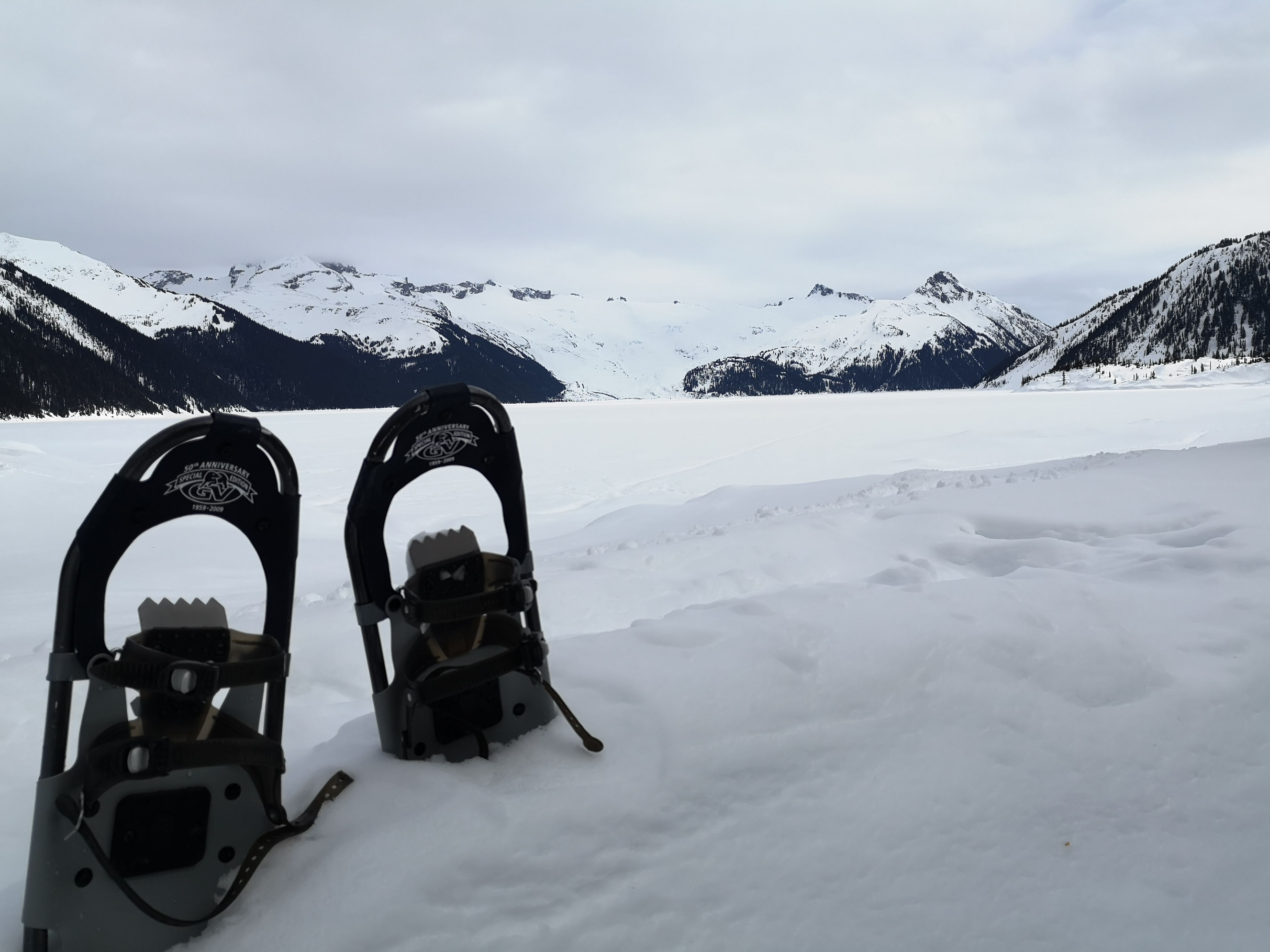
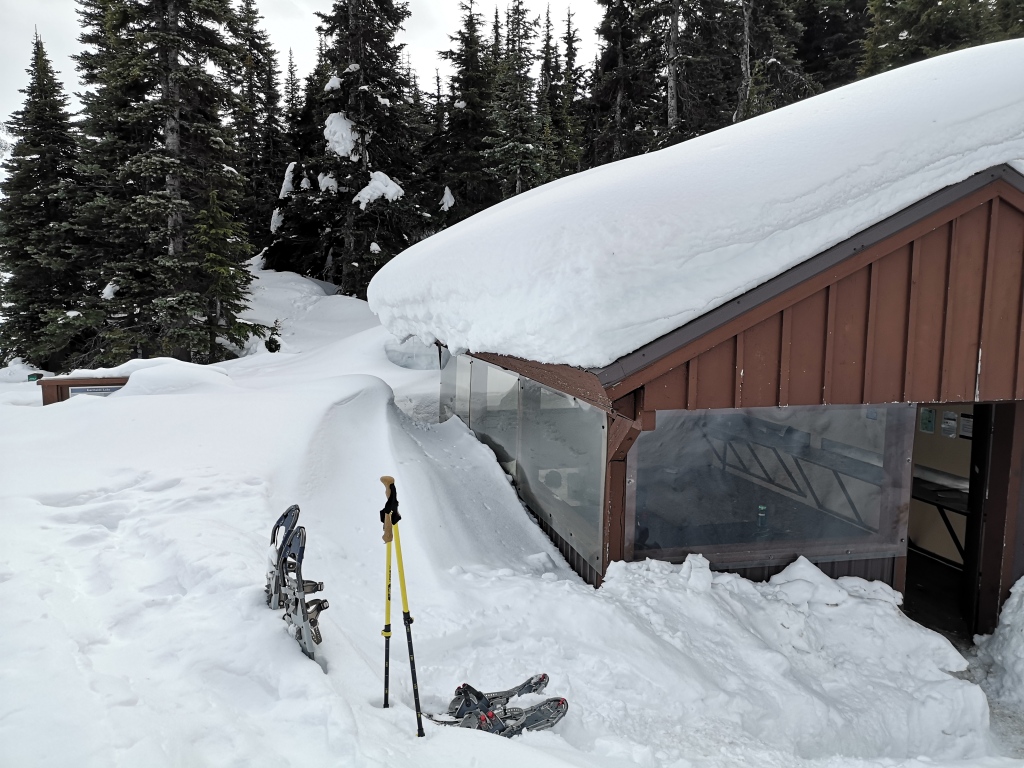
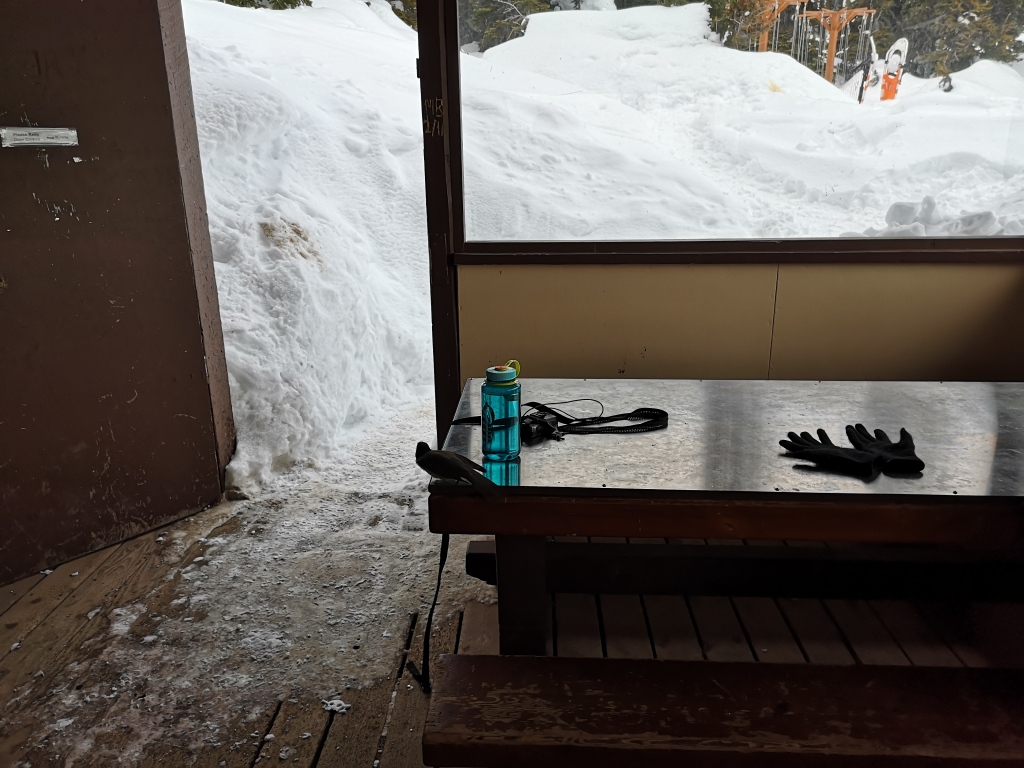
It’s hard to say exactly how long the crossing took (maybe 2 hours?). Looking forward, all we could see nestled amongst the peaks was the Bay, and looking back, the shelter and camping area from which we had departed. The flatness that I had looked at with relief soon became monotonous, and it felt after each of our increasingly frequent breaks that nothing was getting any closer. Lost in the vast, unbroken stretches of whiteness, the supreme goal became to simply place one foot in front of the other. After each break, we’d restart with a firm, grim “last push!”. Well, they can’t all be the last push, and we must have had half a dozen!
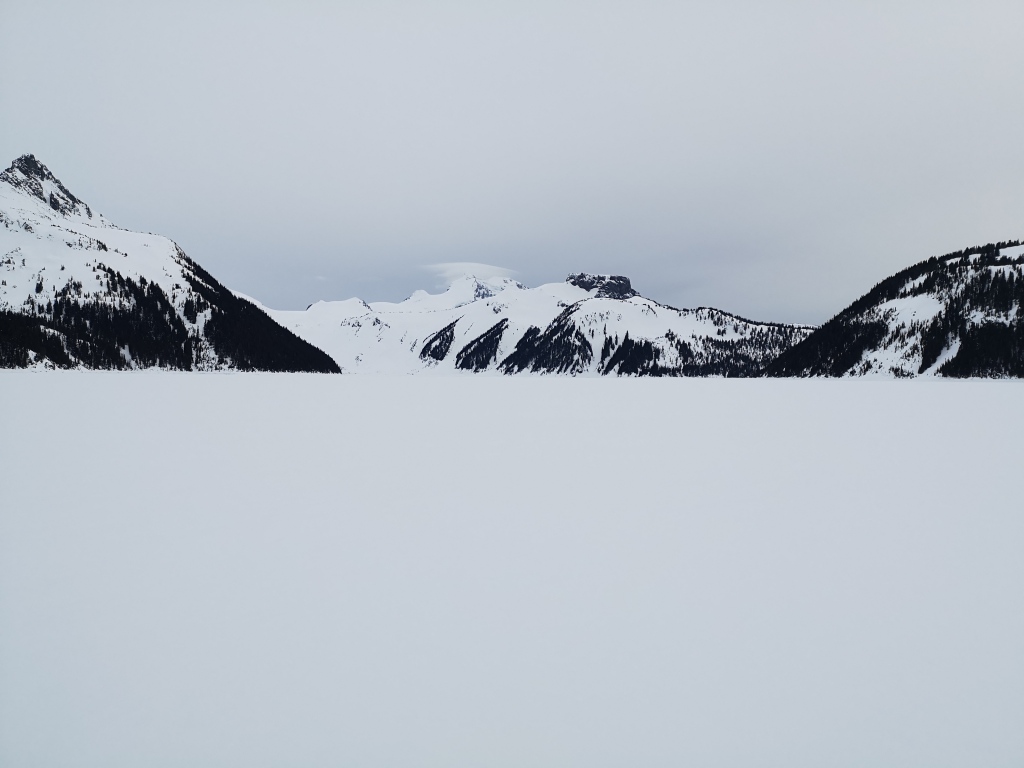
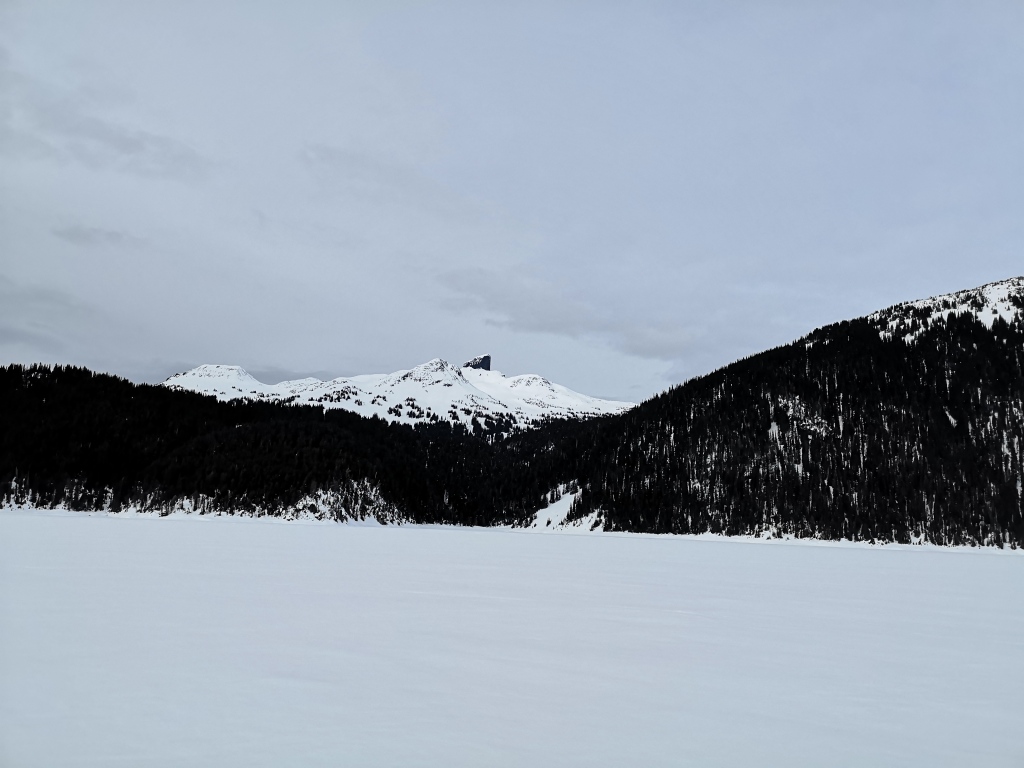
Loud cracks occasionally cut the air as the lake settled beneath our feet, sending vibrations up through our toes, and causing me to repeat a friend’s assurance that the cracking was normal. Low ‘whumps’ echoed around us as the snow settled. The heat of the day must have been hard on the lake. We knew we had gone late in the season for this trek, and the day’s slushy snow and hot sun had me thinking that this might be the last window of the season.
Finally, the flatness was broken by a small rise looming before us, and we gratefully trudged up its side, looking everywhere for the hut. At the crest, we found it below us: Burton Hut, door open in welcome, and the sound of happy campers cooking!
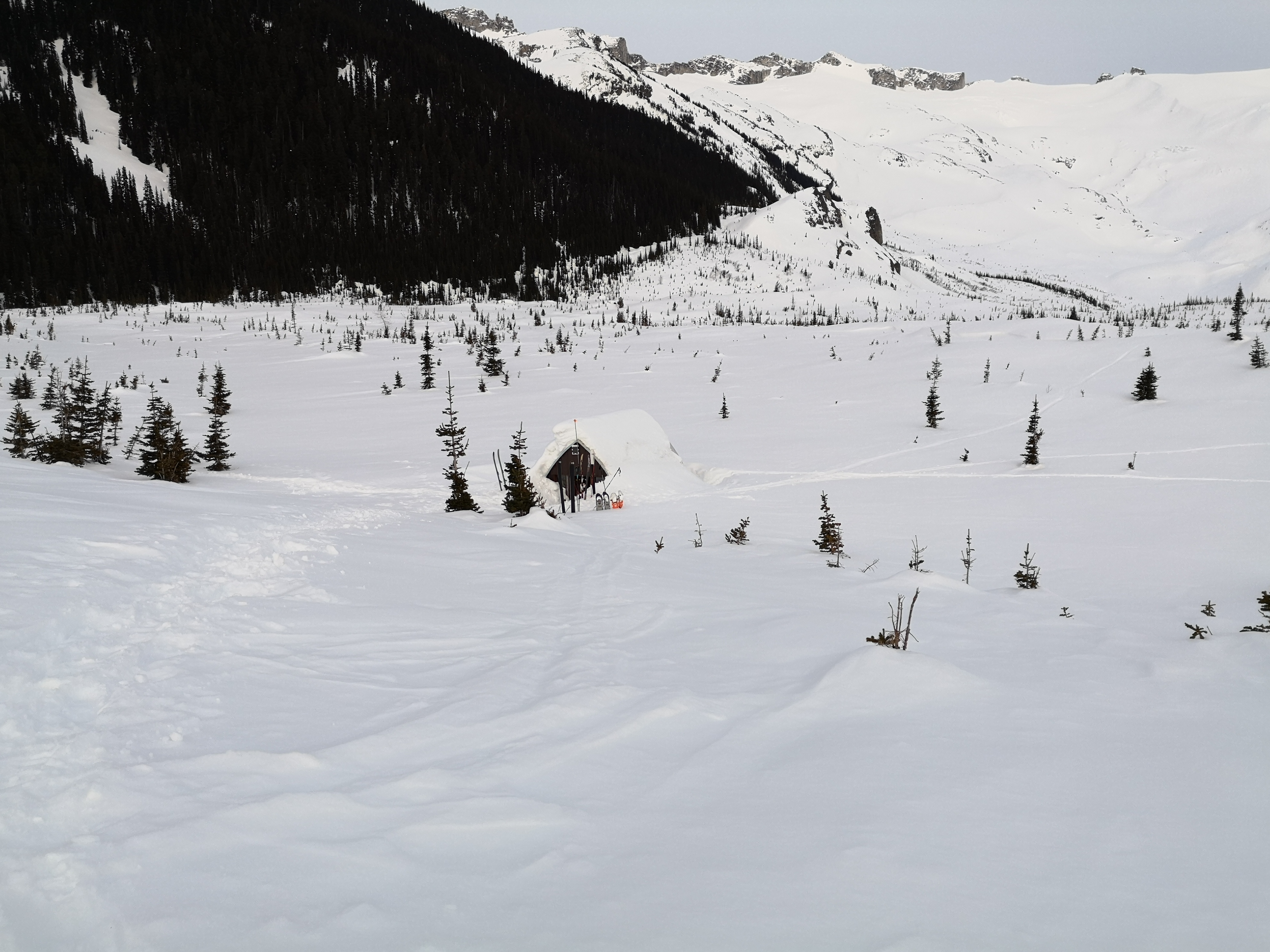
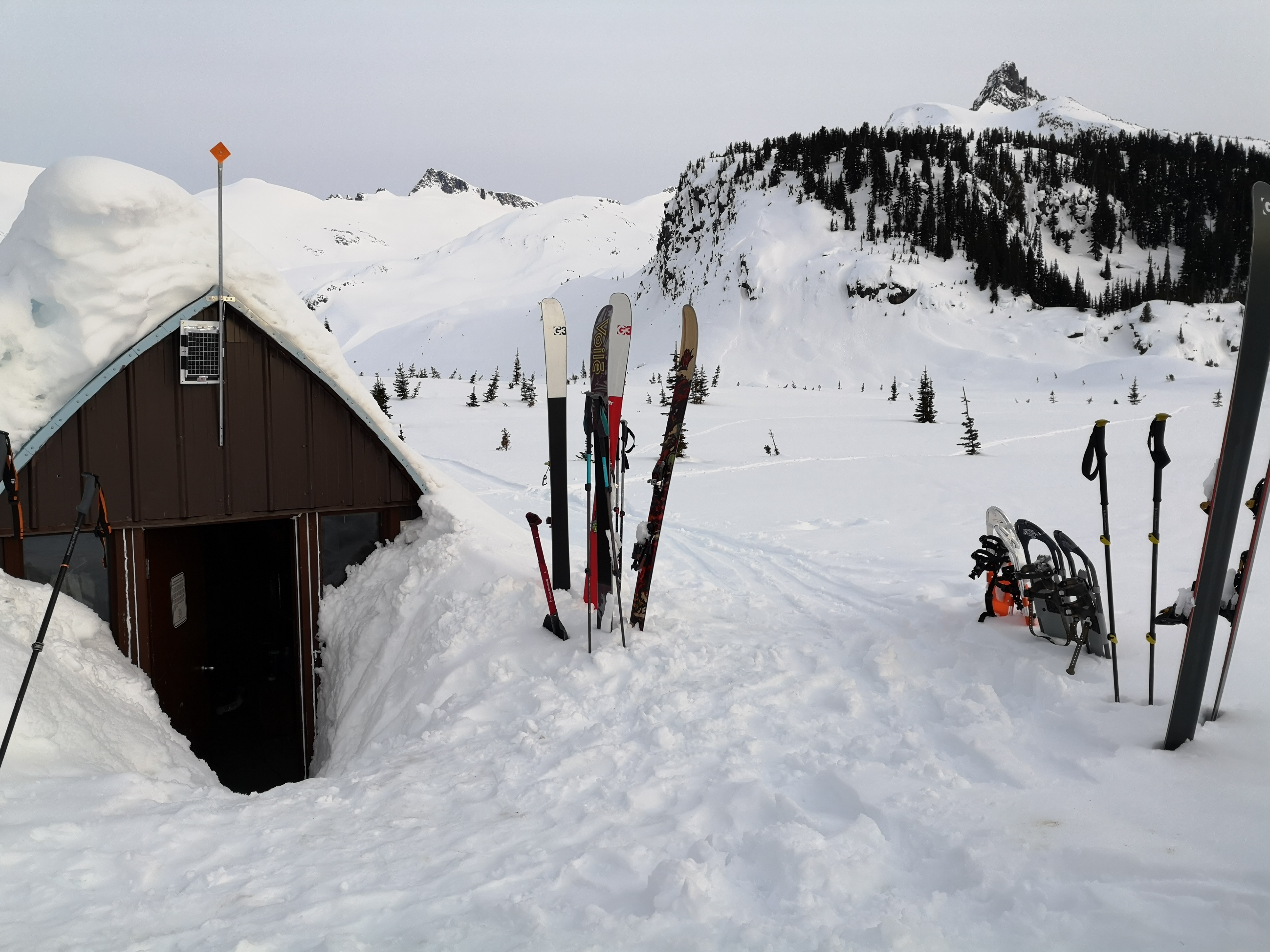
Burton Hut (aka Roland Burton Hut, or Sphinx Hut) in Sphinx Bay is maintained by the VoC, a club of outdoor enthusiasts based out of UBC. As the maintenance of the hut is done by volunteers, the VoC asks that you donate a small amount if you’re spending the night ($5 per party member), and requests that you register your group on the VoC Wiki page to help coordinate with other parties. In addition to this donation, overnight campers in Garibaldi Park need to obtain and carry backcountry permits ($10 per person/ night). Burton Hut is small, but pretty clean, and a common destination for ski tourers, as there are lots of lines to explore in the surrounding Sphinx and Sentinel glaciers. The hut features a cooking ledge, a large bench, and a number of sleeping platforms – both in the main area, as well as in a loft above. It sleeps a maximum of about 15, but it was feeling decently full the weekend we were there with only 7 people. There is an old gas stove and heater, but their state of repair was dubious, and were lacking fuel. There were also solar-powered lights in the hut, which was appreciated, and plenty of hooks and rope for hanging wet gear. A small outhouse was located off to the left of the hut. A few other items we found: shovels, house Crocs (if you didn’t bring alternative footwear to your wet boots), some books, and a weird preserved snake in a jar.
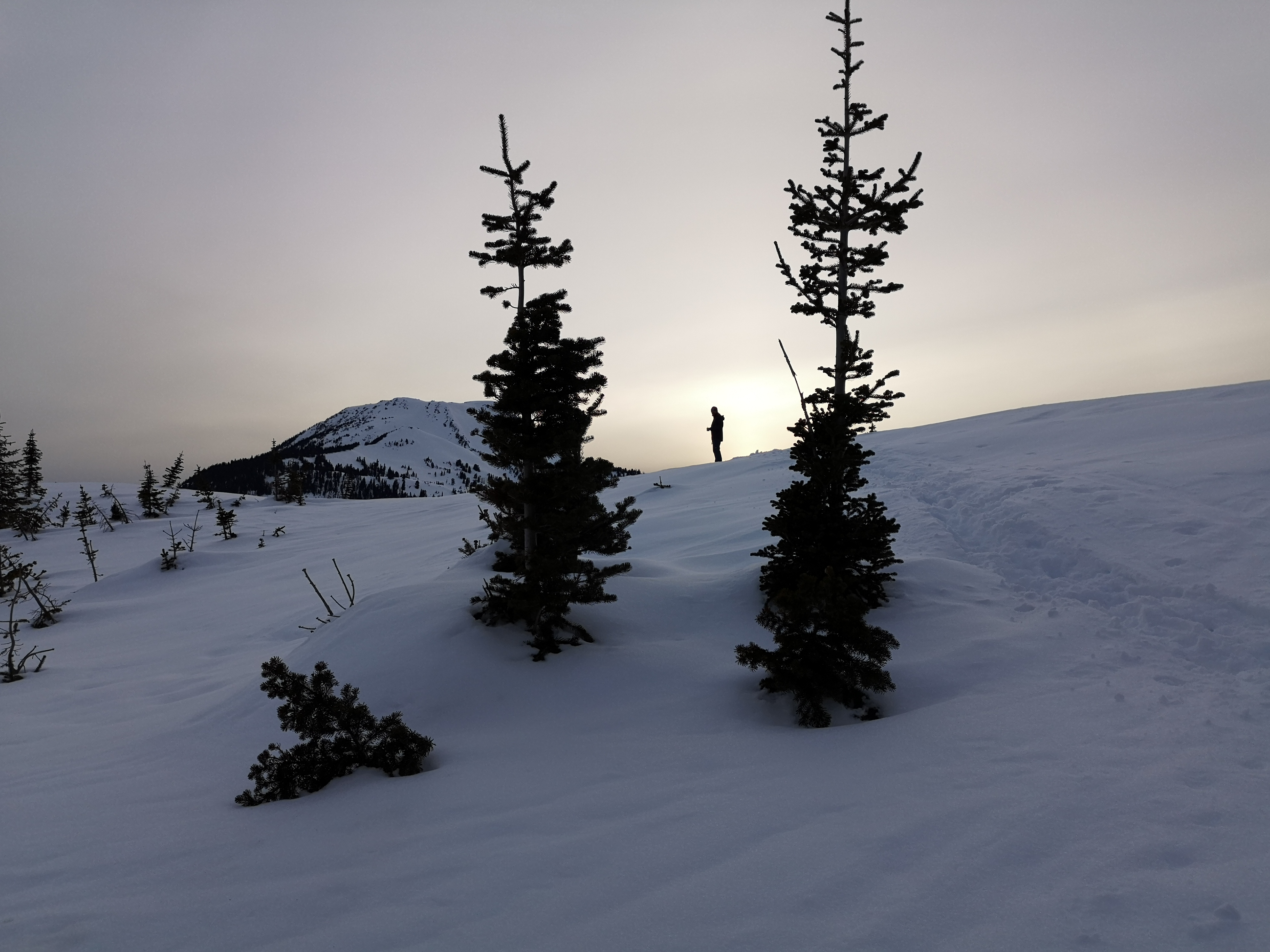
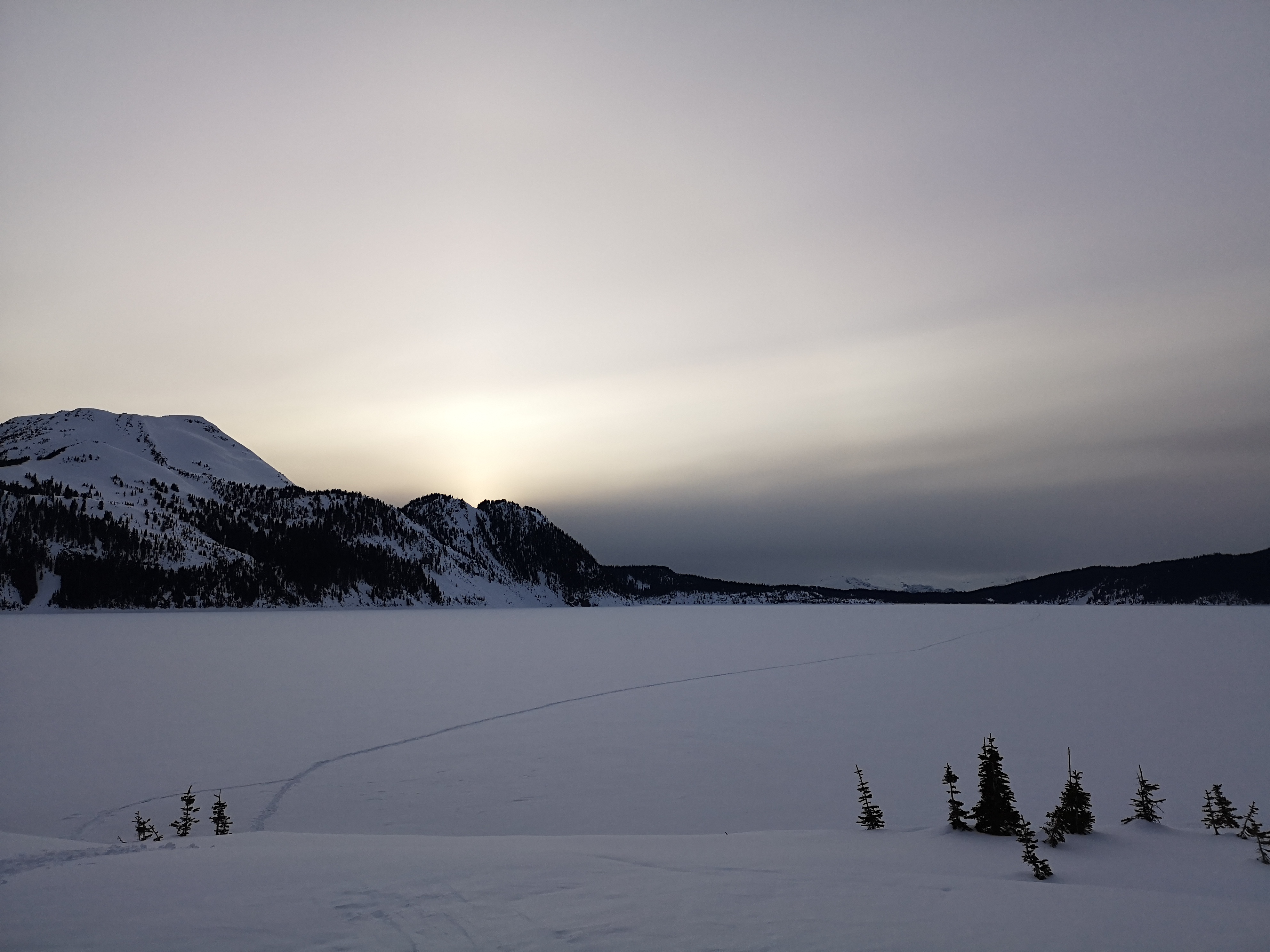
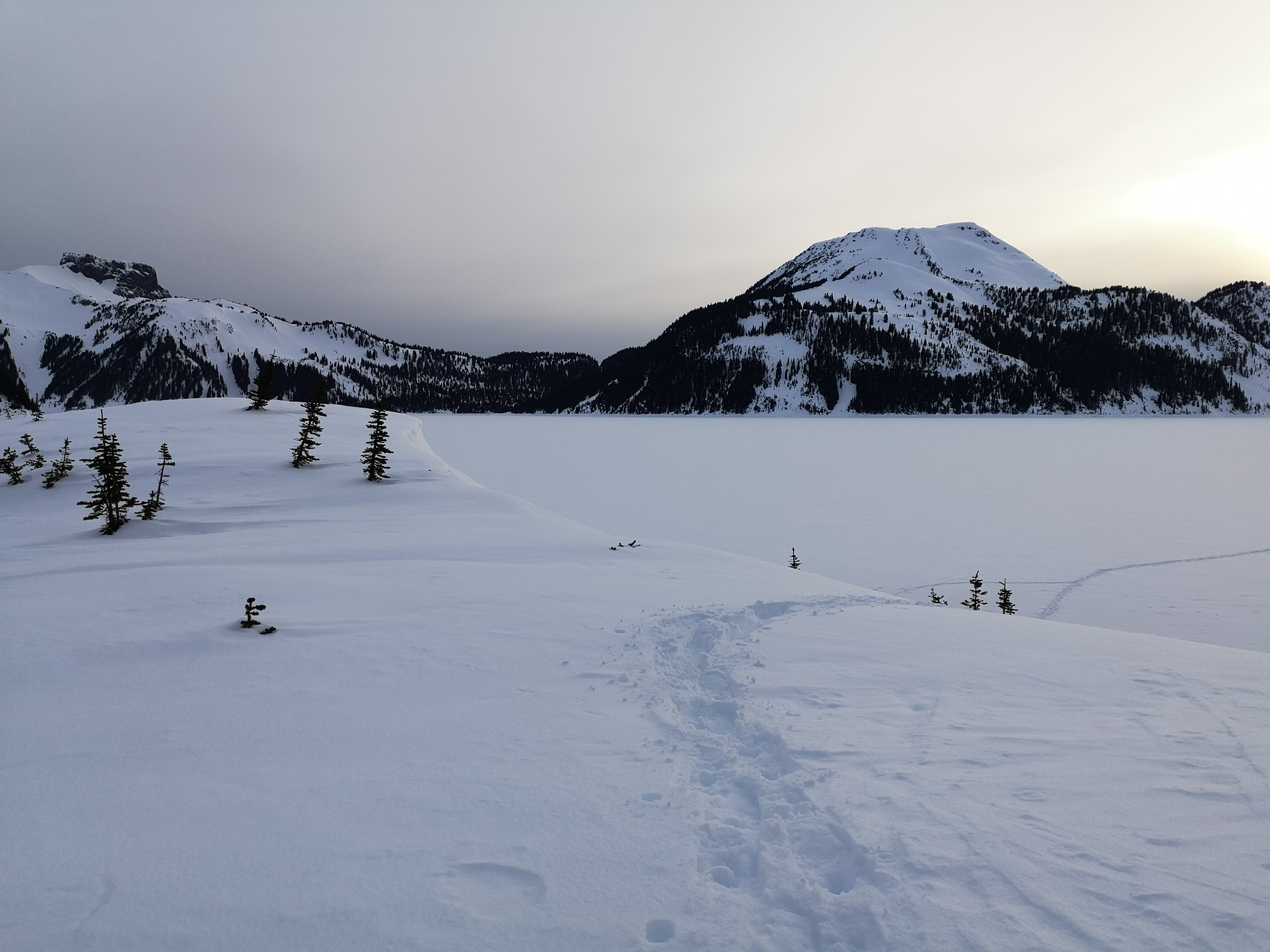
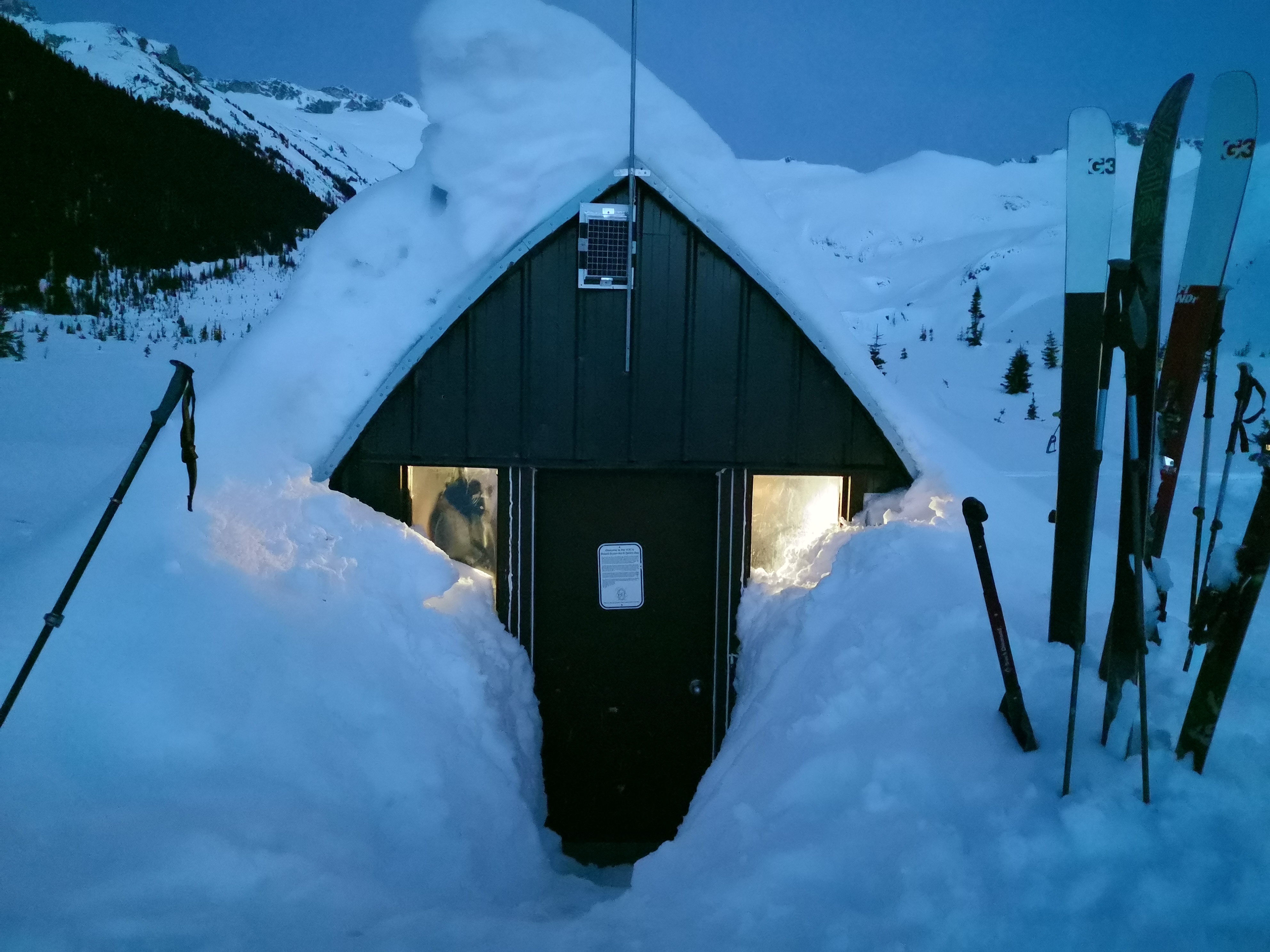
The night was comfortable enough in the hut (the temperature was just above zero Celsius (32 F), but no problem for proper clothing and sleeping bags). As I started the day feeling sick, I was hoping that the exercise and a solid night’s rest would leave me better off the second day. But I felt increasingly worse as the evening wore on, and when the morning dawned, and I threw back another handful of Advil, we made the difficult decision to cut the trip short, and head back out the way we had come. The trek up to the Névé high point and down to Elfin lakes would make for a long day, and my general feeling of lousiness, coupled with the glacial crevasses and avalanche danger (the rating had bumped to high overnight, and we were passing through the most dangerous area at the hottest part of an unseasonably hot day) all contributed to the decision.
It was difficult to give up on a goal that I had put so much time and energy into, and picturing the ridiculously epic glacier crossing in my head – at the feet of magnificent Garibaldi itself – made it difficult to want to head back across the lake instead of down to its south shore that morning. But I’m grateful that my team had the maturity to make such a decision, and after all, these decisions are a fundamental part of the sport. Not glamorous, but sound. Victory is a mindset, and will taste even sweeter next year.
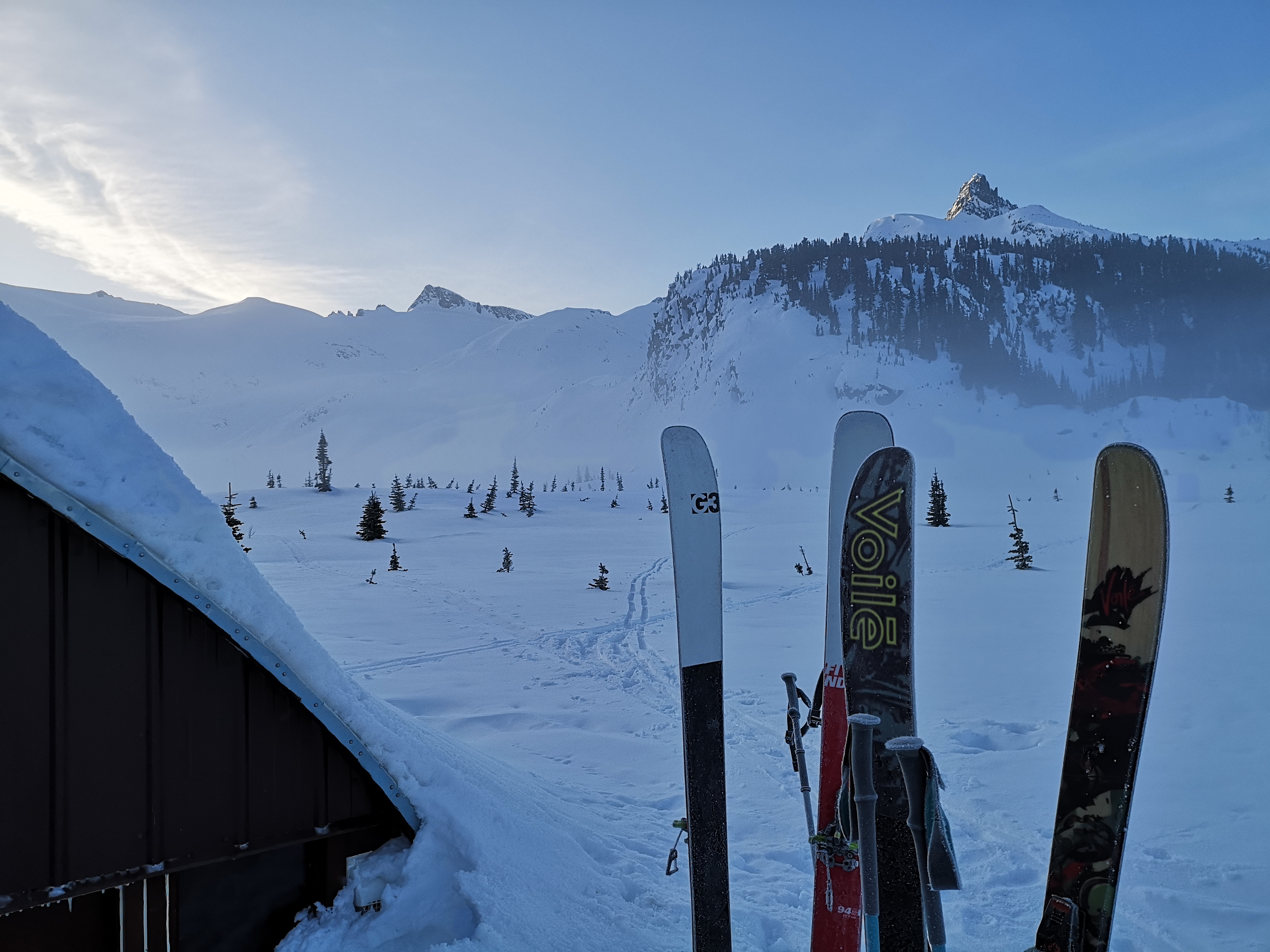
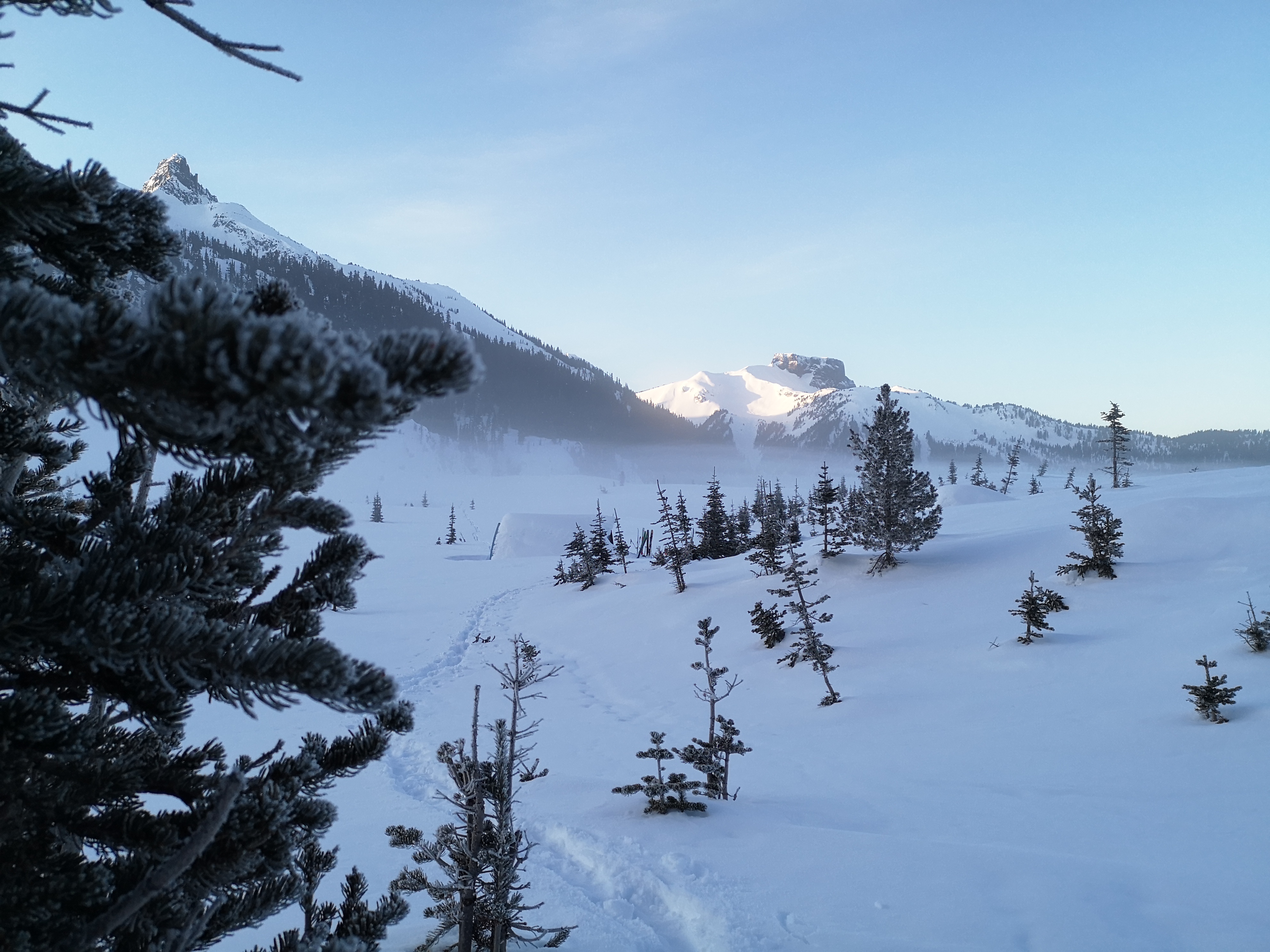
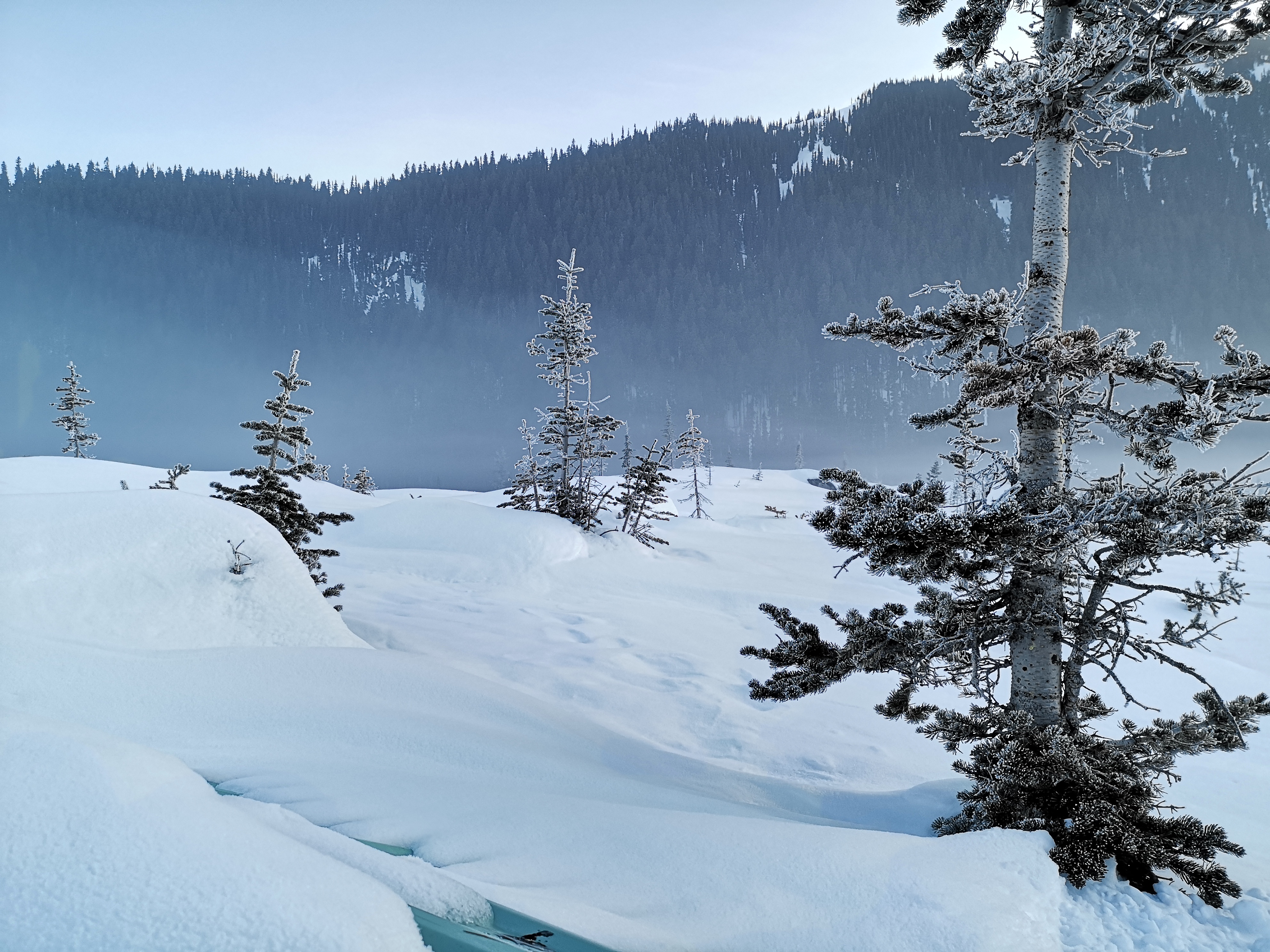
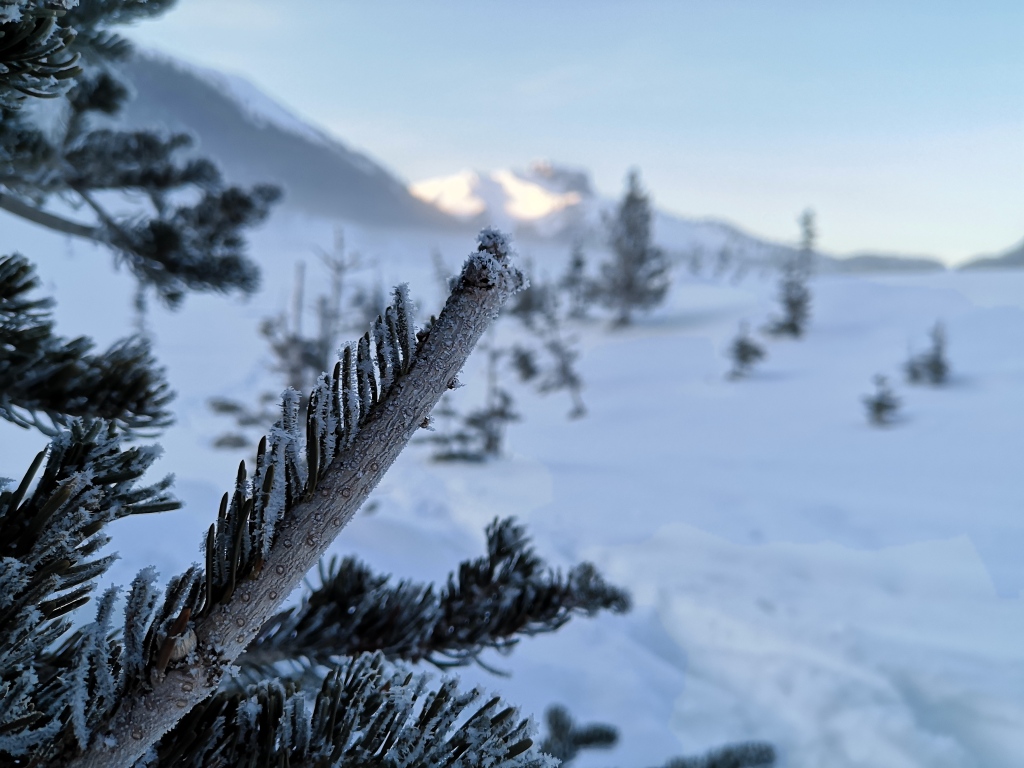
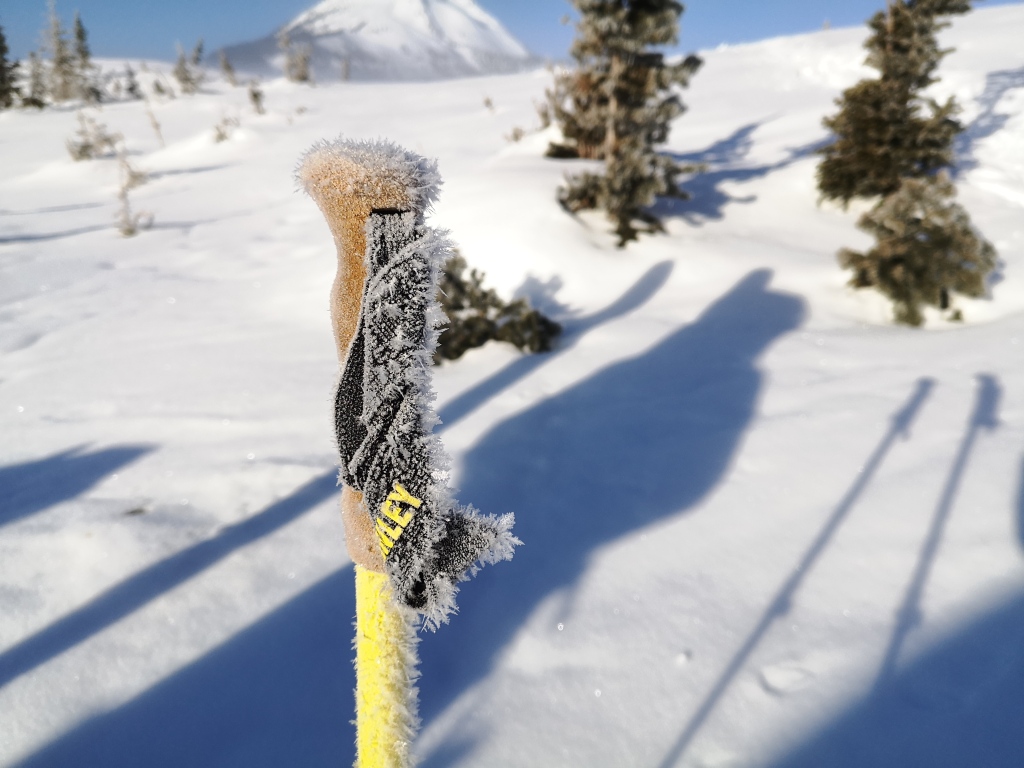
A thick mist covered the lake under the clear morning sky. We were swallowed in it as we crossed back toward the Garibaldi shelter. Everything around us was white, and we were quickly lost in the whiteness and rhythm of the trek. We pushed hard, fell into ‘the zone’, and completed the crossing in just over an hour.
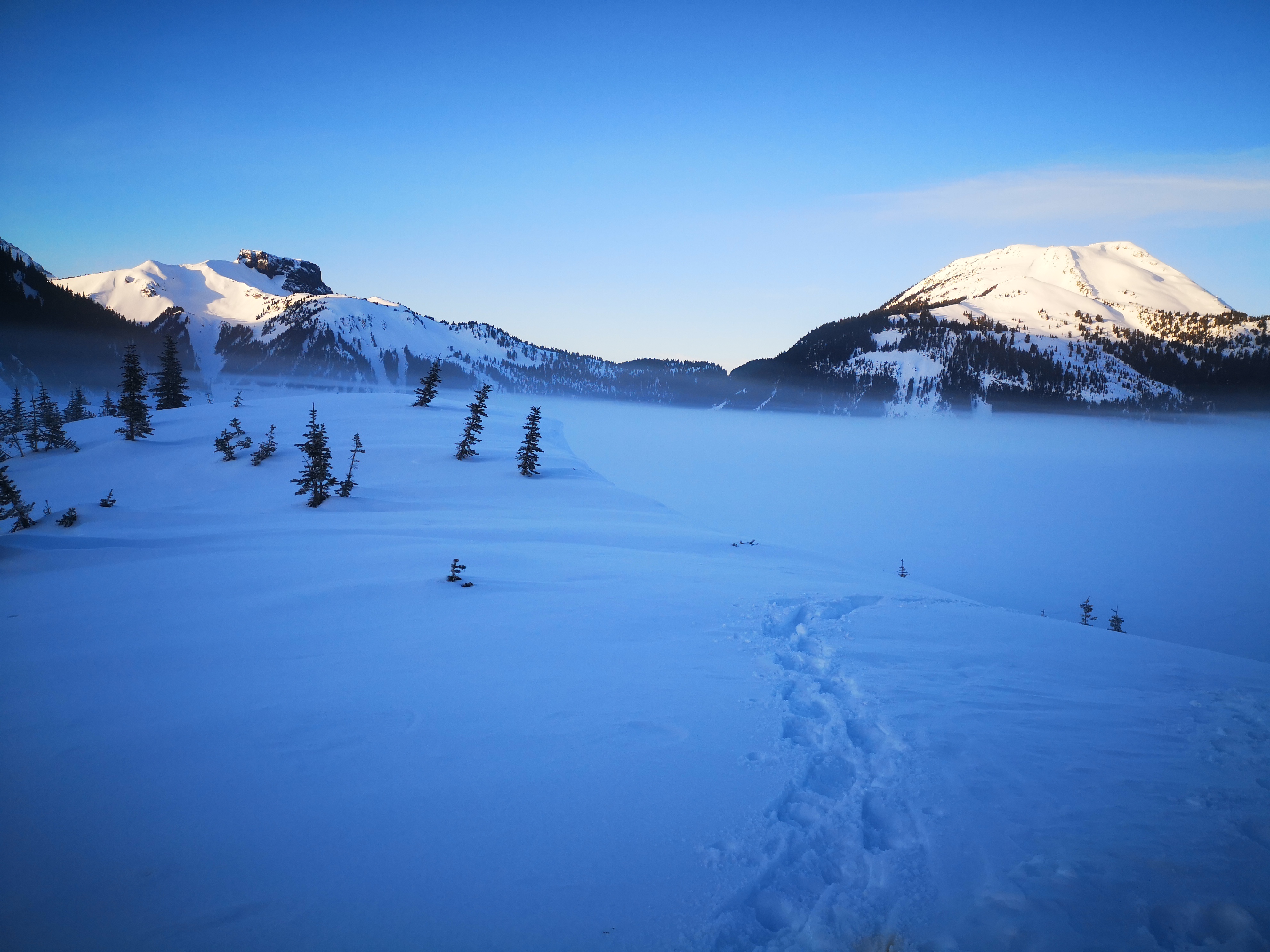
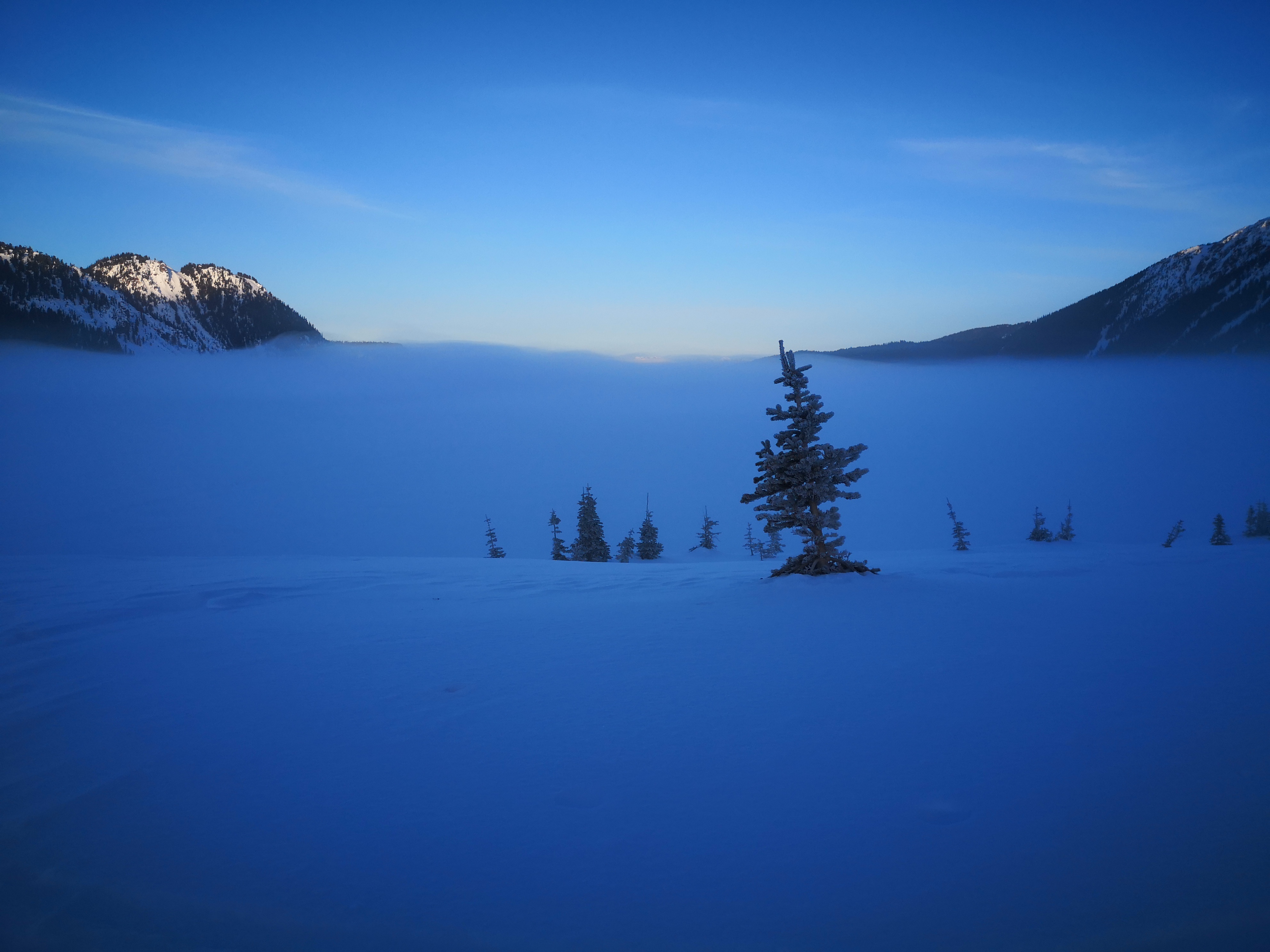
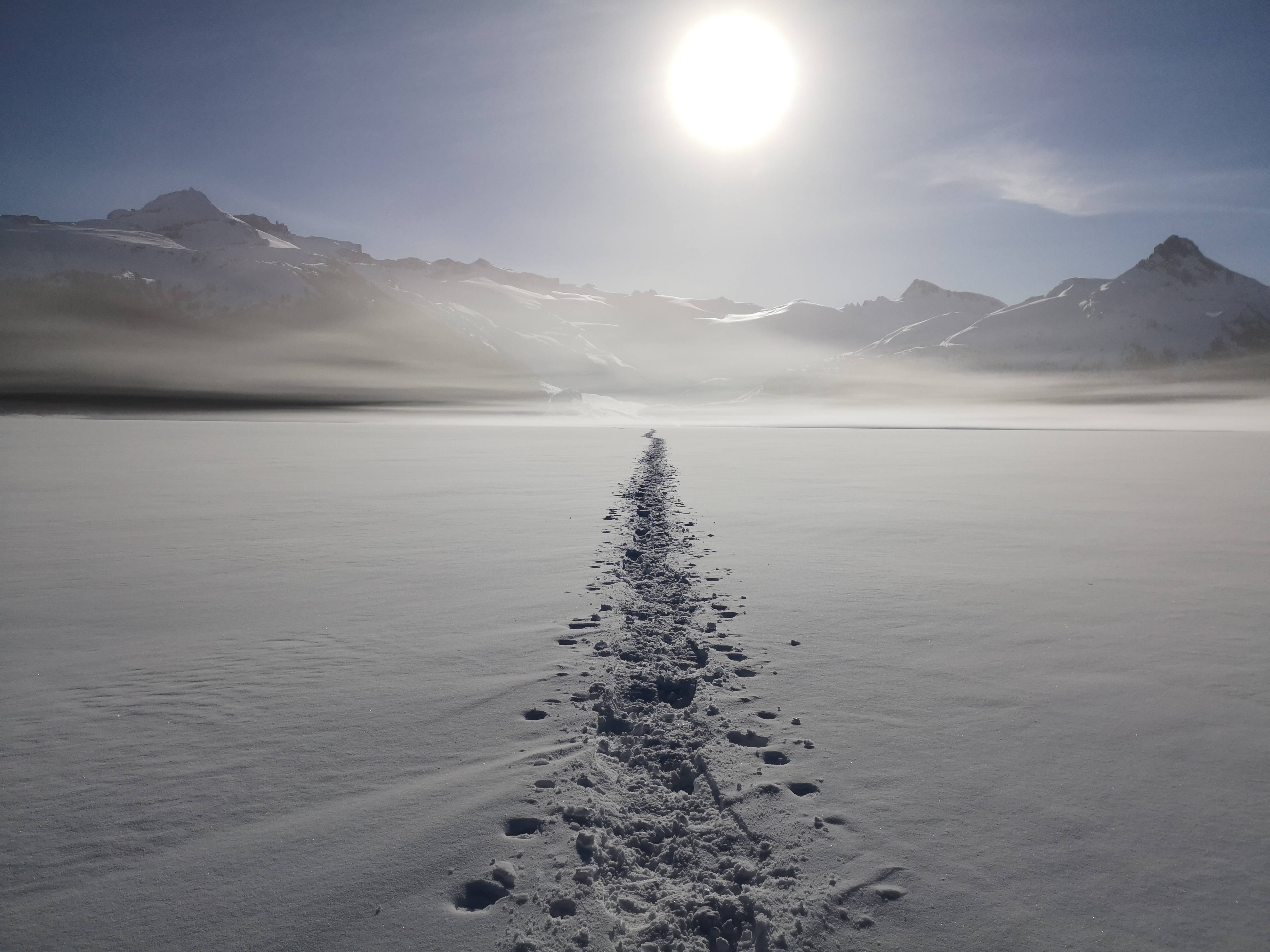
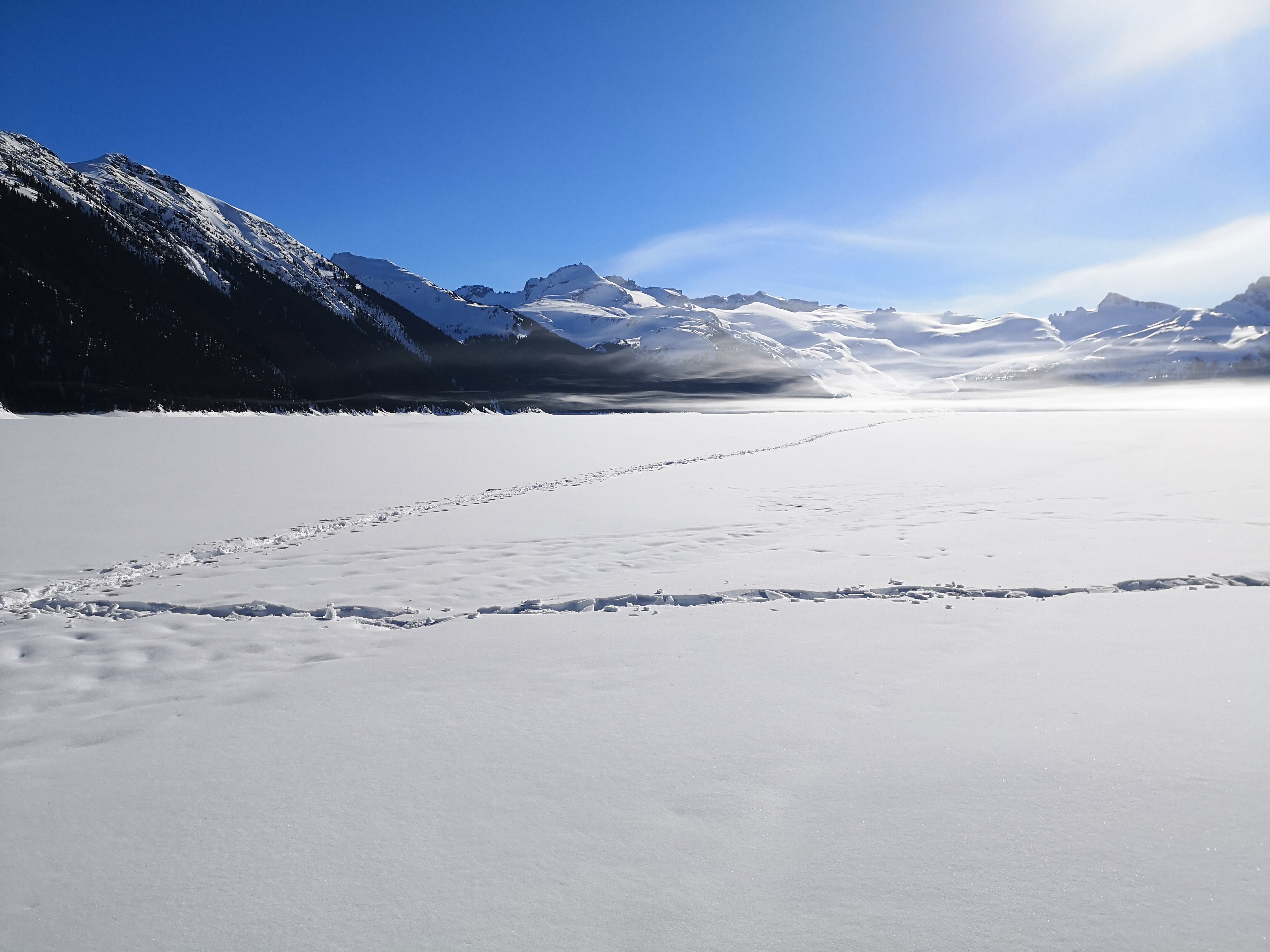
After a quick snack on the shore, we began the 11 km descent. The heat rose as the sun ascended and we descended. Certain sections in the last few kilometers of the switchbacks were downright treacherous, as yesterday’s heat and overnight freeze had produced sheets of ice. More than once I almost took a tumble down a steep, treed slope, until I had the sense to put on my micro-spikes for traction. Our legs were weary by the time we hit the summer trailhead, and downright painful once we made it down ‘the last push’ (the road) and back to the car. Each of us enjoyed a private moment of supreme pleasure as we took off our boots.
As we drove back towards Squamish, the thermometer in the car told us that it had reached 18 degrees, and I couldn’t help but feel like we had left winter behind in the mountains. As I turned my mind to spring, I was sad to not have been able to cross the Névé off my winter list, but the trek to Burton had been enjoyable and memorable – the ‘last push’ of winter.
Trail Stats
Total trip distance was about 32 km (19.9 miles) over 2 days – 2 km up the road, 9 km from the trailhead to Garibaldi shelter, then just under 5 km across the lake to Burton Hut. On the way up, we finished in about 8.5 hours, and on the way down, in about 4 hours. Total elevation gain was about 1150 m (3770 feet).
While the trail to Burton Hut posed no serious risks (but please don’t be an unprepared hiker! I witnessed people with sneakers and nothing else attempting to start the 8 hour trail to the lake at 2pm!), do your research if you plan to try the Névé. Bring avalanche and crevasse rescue gear, and get proper training in both.
Been to Burton? Crossed the Névé? Tell me how epic/painful you found it in the comments below! Get me stoked!

2 thoughts on “The Last Push”